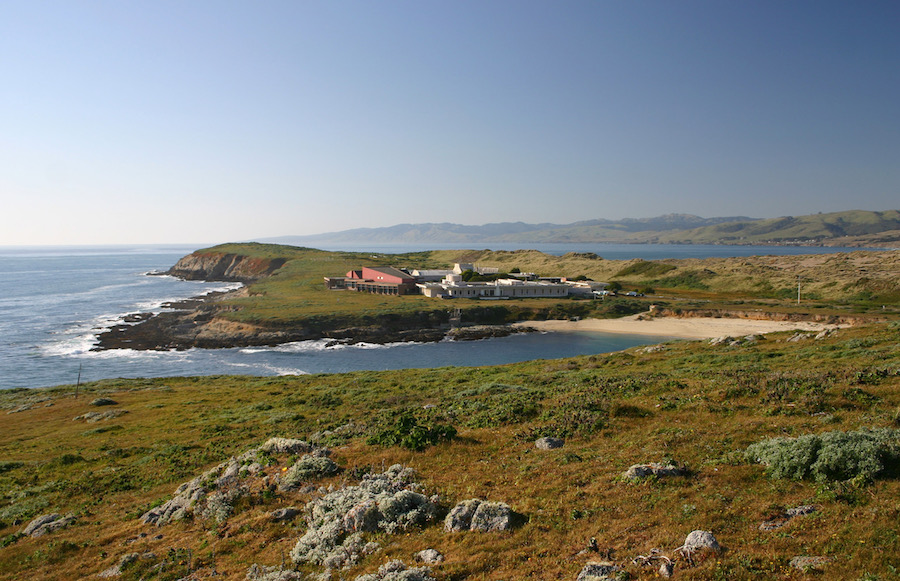
Natural Reserve System was created for conducting research projects
Even at one of the top public universities for research, embarking on a research project as a student may seem overwhelming and issues that hinder progress may arise. For instance, a considerable amount of research is best done outdoors, where people may tamper with equipment that is left out. This is where the Natural Reserve System comes in.
“The Natural Reserve System actually consists of 39 reserves across the state of California. UC Davis manages five of those reserves, so each reserve belongs to a home campus [in the UC system],” said Suzanne Olyernik, the reserve director at the Bodega Bay Marine Reserve.
Like the other reserves, public access is restricted so experiments can be set up without human interference. The 39 reserves, owned by the University of California, consist of local habitats that are protected so researchers can securely work on projects pertaining to the environment and the natural world.
“[The reserves] go from Northern California all the way down to far Southern California and from the coast where I am all the way over to the Eastern Sierras,” Olyernik said. “It’s the largest system of natural reserves that any university has in the world, so it’s a pretty great system, but I would love for more people to know about it.”
Although UC Davis only manages 5 of the 39 reserves, any student can go to any one of these reserves. In fact, people from outside the UC system or even outside of the country can apply to do research projects at the reserves.
“It’s often a really neat setting for students to come to because you also get to meet people that are also interested in some of the same things you’re interested in, but also maybe you’re interested in other disciplines who are doing work at a field station, and you get to interact with them on this really small community basis,” Olynerik said.
Some funding through the Natural Reserve System is available for graduate students to work on projects at the reserves. Undergraduate students can use the facilities as well, but they often work for an advisor or graduate student who started a project.
Laura Jurgens, an ecologist and marine scientist, is currently working with the Smithsonian Environmental Research Center and Temple University, but used the Natural Reserve System for her dissertation on temperatures of mussel and seaweed beds.
“So when I came to Davis, one of the aspects of orientation for new graduate students in ecology was to introduce you to the reserves system,” Jurgens said. “So we got to go visit many of them. It’s amazing how few undergrads know about it because it’s a really fantastic resource.”
Since the reserves are located in California habitats, most of the research is conducted by students interested in wildlife biology.
“Certainly we see a lot of people from wildlife, fish and conservation biology that are doing projects associated with their classes, or people doing their thesis with an undergraduate advisor they found,” said Jeffery Clary, the associate director of the UC Davis Natural Reserves. “And I suspect that’s largely because their undergraduate advisors they’re working with are familiar with the reserves, and are sending them that way. I suspect in the other kinds of majors […] advisors aren’t automatically thinking of us as a place for their students to be working.”
While students who are doing wildlife biology projects may seem the most natural fit for California habitats, students of any major can apply to study at the reserves if their research question pertains to the environment or resources in a particular reserve.
“Also we’ll [Bodega Bay Reserve] get more interest from students who are in the humanities or the arts, and some of the reserves attract students from engineering and other disciplines,” Olynerik said. “Particularly at Quail Ridge, they have a lot of engineering students that are interested because they have a wireless mesh network out there, and they do a lot of engineering around tracking animals, using sensors and using tracking systems, so there’s definitely room for lots of different disciplines to be involved in the field stations.”
One of the easiest ways to check out a reserve is through a class. Field classes taken through UC Davis often end up using one of the reserves.
“It’s been a few years now, but we actually went through the course catalog and […] it was over a third of all classes on campus with a field component where they were using at least one UC Davis reserve. It is one of the most common places for field classes to go,” Clary said.
In addition to the outdoor space, the reserves have other resources. The Bodega Bay Marine Reserve has a laboratory, some of the reserves have overnight accommodations for students, and some, such as Quail Ridge, have special technology that researchers can use.
“We’re a great resource,” Olyernik said. “Our mission is to provide these amazing habitats for research, education, and public outreach.”
Written by: Rachel Paul — science@theaggie.org




